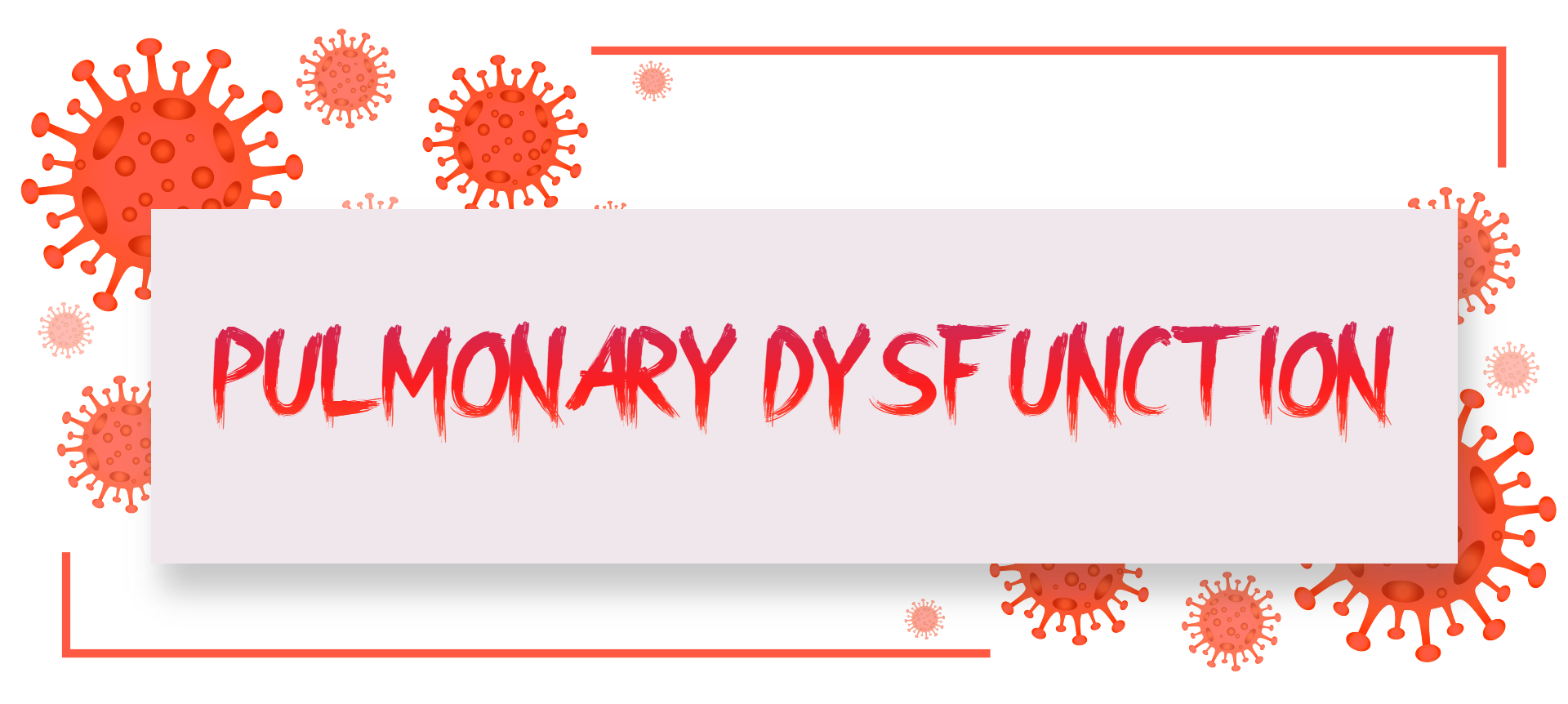Long COVID Unmasked: Understanding Pulmonary Dysfunction and its Impact on Severity
.jpg) |
| Severity Long COVID-19 |
Introduction
Overview of Long COVID
Long COVID, also known as post-acute sequelae of SARS-CoV-2 infection (PASC), refers to the persistence of symptoms in individuals beyond the acute phase of COVID-19. While many people recover from COVID-19 within a few weeks, a significant number continue to experience a range of physical, cognitive, and psychological symptoms for an extended period, even after testing negative for the virus. Long COVID can affect individuals of all ages, including those who had mild or moderate initial infections.
The symptoms of Long COVID can vary
widely and affect multiple body systems. Common symptoms include persistent
fatigue, shortness of breath, cough, chest pain, joint pain, muscle weakness,
cognitive difficulties (brain fog), sleep disturbances, mood changes, and
anxiety. Some individuals may experience organ-specific symptoms, such as
cardiac issues, gastrointestinal problems, or neurological symptoms like
headaches or dizziness.
The duration of Long COVID symptoms
can vary from weeks to several months, and in some cases, symptoms can persist
for over a year. The impact of Long COVID on individuals' quality of life and
functional capacity can be significant, often leading to disability, decreased
work productivity, and impaired daily activities.
The exact cause of Long COVID is still not fully understood, and ongoing research is attempting to uncover its underlying mechanisms. It is believed that Long COVID may result from a combination of factors, including persistent viral presence, dysregulated immune response, inflammation, tissue damage, and long-term complications in various organs, including the respiratory system, cardiovascular system, central nervous system, and vascular system.
Managing Long COVID involves a multidisciplinary approach, including medical care, rehabilitation therapies, mental health support, and lifestyle modifications. Treatment options focus on symptom management, addressing specific organ system issues, and supporting overall well-being.
Given the global impact of the COVID-19 pandemic and the growing number of individuals experiencing Long COVID, there is a pressing need for further research to better understand the condition, develop effective treatments, and provide support for those affected by this long-lasting consequence of the virus.
Purpose of the Article
The purpose of this article is to
examine the role of pulmonary dysfunction and COVID-19 severity in the
development of Long COVID. The article aims to shed light on the relationship
between pulmonary complications during the acute phase of COVID-19 infection
and the persistence of respiratory symptoms in individuals experiencing Long
COVID.
By exploring the impact of SARS-CoV-2
on the respiratory system, including lung damage, inflammation, and fibrosis,
the article will elucidate how these factors contribute to the development of
Long COVID. It will delve into the mechanisms underlying pulmonary dysfunction,
such as viral persistence, dysregulated immune response, autonomic dysfunction,
and abnormal blood clotting, to provide a comprehensive understanding of their
association with Long COVID.
The article seeks to provide insights
into the link between the severity of lung involvement during acute COVID-19
infection and the risk of developing Long COVID symptoms. It will examine the
persistent respiratory symptoms reported by Long COVID patients and highlight
the importance of understanding pulmonary dysfunction in managing and
addressing the long-term effects of COVID-19.
By presenting the current knowledge
and research on the topic, the article aims to contribute to the scientific
understanding of Long COVID and assist healthcare professionals, researchers,
and policymakers in developing effective strategies for the prevention,
diagnosis, and management of this condition. Furthermore, it seeks to raise
awareness among the general public about the potential long-term respiratory
consequences of COVID-19 and the importance of early detection and appropriate
care for individuals experiencing Long COVID.
Pulmonary Dysfunction and Long COVID
Impact of SARS-CoV-2 on the Respiratory System: The SARS-CoV-2 virus primarily targets the respiratory system, leading to a range of pulmonary complications during acute COVID-19 infection. These complications include pneumonia, acute respiratory distress syndrome (ARDS), and pulmonary fibrosis.
Relationship Between Pulmonary Dysfunction and Long COVID:
Research has indicated that individuals with more severe lung involvement during acute COVID-19 infection are at a higher risk of developing Long COVID symptoms. Parameters such as impaired lung function, decreased lung capacity, and abnormal chest imaging findings are used to assess the severity of lung damage.
In a study published in the Nature Medicine journal in 2022, researchers found that patients with Long COVID had significantly lower lung function than those who had recovered from COVID-19 without any long-term symptoms. The study also found that the severity of pulmonary dysfunction was correlated with the severity of COVID-19 symptoms.
These findings suggest that pulmonary dysfunction may be a
key factor in the development of Long COVID. The virus that causes COVID-19,
SARS-CoV-2, can directly damage the lungs, leading to inflammation and scarring.
This damage can impair lung function and make it difficult for people to
breathe.
In addition to direct damage from the virus, pulmonary
dysfunction in Long COVID may also be caused by other factors, such as an
autoimmune response or chronic inflammation. These factors can further damage
the lungs and make it difficult for them to heal.
The role of pulmonary dysfunction in Long COVID is still
being investigated, but it is clear that this is an important area of research.
If we can better understand how pulmonary dysfunction contributes to Long
COVID, we may be able to develop better treatments for this condition.
 |
| Pulmonary Dysfunction- Long COVID |
Long COVID patients commonly report persistent respiratory symptoms such as shortness of breath, cough, and exercise intolerance. These symptoms suggest a direct association between pulmonary dysfunction and the development of Long COVID.
Inflammation and Fibrosis
Prolonged inflammation can lead to the development of pulmonary fibrosis, characterized by the excessive deposition of collagen and other extracellular matrix components. Pulmonary fibrosis can impair lung function and contribute to persistent respiratory symptoms in Long COVID patients.
Pulmonary fibrosis disrupts normal lung architecture, impairs gas exchange, and reduces lung compliance. This leads to reduced oxygenation, exercise intolerance, and breathlessness. Additionally, fibrosis can cause vascular remodeling, leading to increased pulmonary vascular resistance and potential complications such as pulmonary hypertension.
Mechanisms of Pulmonary Dysfunction in Long COVID
Viral Persistence and Ongoing Inflammation:
It is hypothesized that viral persistence within the lungs may contribute to ongoing inflammation and tissue damage, resulting in long-term respiratory symptoms in Long COVID patients.
Dysregulated Immune Response and Tissue Damage:
The immune response triggered by the initial infection can become dysregulated, causing chronic inflammation and tissue damage in the lungs. This dysregulation may lead to the persistence of respiratory symptoms in Long COVID.
Autonomic Dysfunction and Airway Complications:
Long COVID patients often experience autonomic dysfunction, which can affect bronchial smooth muscle tone and impair airway clearance mechanisms. These complications contribute to respiratory symptoms such as cough and shortness of breath.
Abnormal Blood Clotting and Lung Impairment:
Long COVID is associated with abnormal blood clotting, which can lead to microvascular thrombosis. These blood clots can impair lung function, affecting gas exchange and contributing to respiratory impairment.
Conclusion:
Pulmonary dysfunction plays a significant role in the development of Long COVID. The initial lung damage caused by SARS-CoV-2 infection, coupled with exaggerated inflammation and the development of pulmonary fibrosis, contribute to persistent respiratory symptoms experienced by Long COVID patients. Understanding the mechanisms underlying pulmonary dysfunction in Long COVID is crucial for developing effective management strategies. Further research is necessary to unravel the complexities of Long COVID and provide targeted interventions to alleviate the burden of this condition on affected individuals.



